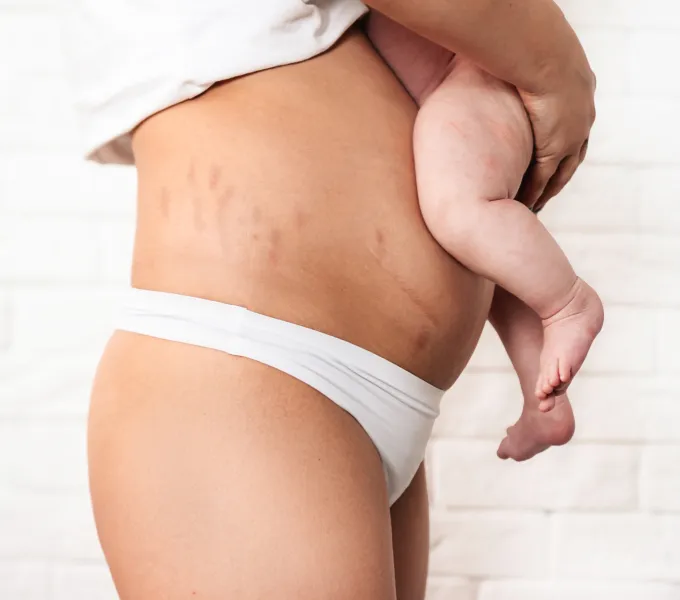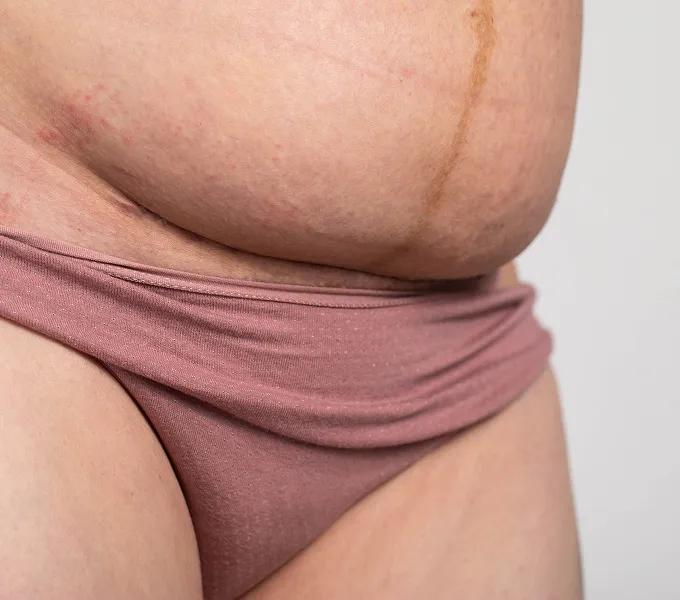
How Pelvic Floor Therapy Can Support Recovery After a Cesarean Hysterectomy
Many women and birthing people are surprised to learn that after major surgeries like cesarean section (c-section) or cesarean hysterectomy, postoperative physical therapy is often overlooked, despite being crucial for optimal recovery. In this post, we’ll explore why postpartum rehabilitation and specialized pelvic floor physical therapy matter after c-section and hysterectomy births, and how early intervention can improve healing and quality of life for new parents.
Postoperative Rehab Is Standard—But Not for Cesarean or Hysterectomy Surgery
During my inpatient rotation at the University hospital where I did my physical therapy residency in women’s health, it was common for me to treat patients after abdominal surgery. My occupational therapy colleague and I would evaluate patients in their hospital room after colon surgery, gallbladder removal, and hernia repair with the goal of helping them recover earlier to safely return home. We would ask routine questions to guide us on the activities they would be doing in the first week after surgery: “Do you have stairs at home?” “Do you have a walk-in shower or tub to step over?” “Who will be around to help you?” “Will they assist with cleaning, laundry, and meals?”
Despite my experience in women’s health and surgical rehab, there was one area of the hospital where patients were not offered occupational or physical therapy after their open abdominal surgery: the maternity unit. While we were routinely treating patients in the hospital after various abdominal surgeries, we were not providing rehab to women after cesarean section who were expected to return home to care for their baby. It wasn’t until 5 years into my practice that I returned to inpatient care to offer physical therapy in the hospital after female-specific surgery including prolapse repair, endometriosis surgery, cesarean section, hysterectomy, and the most extensive surgery at the time of delivery: the cesarean hysterectomy.
When I first started treating patients in the hospital after cesarean hysterectomy, I was shocked that rehab was not a standard component of care after this major abdominal surgery.
My first inpatient cases were women in the ICU who had complications after their procedure from excessive bleeding, bladder injury, or a painful condition called post-op ileus which prevented them from passing gas or having a bowel movement. If a patient was admitted with placenta accreta spectrum, a life-threatening disorder where the placenta does not completely detach at birth, she was prepped on why a hysterectomy was needed during her delivery and the complications that could arise from surgery.
Addressing Mental Health After C-Section and Hysterectomy
However, if a patient had an unplanned hysterectomy at the time of her birth, there was no preparation for the impact this unexpected surgery would have on her life and her ability to care for her newborn.
The approach I took in my initial evaluation was different from other abdominal surgery cases. Patients after an unexpected surgical birth have relatively less time to process the impact of the procedure on their childcare responsibilities and their postpartum recovery. On the third day after her cesarean hysterectomy, a woman who lost 4 liters of blood when an OBGYN resident accidentally cut her uterine artery told me that she always thought she would “give birth to a large family.”
Dr. Karin Fox, M.D., M.Ed. is the Director of the Placenta Accreta Spectrum program at The University of Texas Medical Branch. She spoke about the complexity of an unplanned cesarean hysterectomy and the impact it has on mental health. “Everybody is different,” she said. “There are some people who may have had 1 or 2 babies, and they want to have more. There are others for whom in their culture, if they lose their uterus, they are no longer a woman and they lose value within their community. That’s deeply personal and really isolating.”
For my patient, her plan now prioritized an early recovery so that her mental health was supported while she physically prepared to return to the functional activities she would do at home. We worked on negotiating stairs in the hospital with less pain so she could navigate them at home between her bedroom and the kitchen. Every step reminded her of the fresh incision that curved across her lower abdomen. As the lead therapist on her maternal care team, my priority was ensuring that her mental health was supported and that she could physically manage the activities she was expecting to do at home as she continued to heal.
As the lead therapist on her maternal care team, my priority was ensuring that her mental health was supported and that she could physically manage the activities she was expecting to do at home as she continued to heal.
Why Physical Therapy Is Essential for Postpartum Recovery
During my inpatient practice, when our rehab team expanded services to patients after cesarean section as well, Dr. Fox was one of our major physician champions. As a physician, her primary goal was to reduce complications after surgical birth and she was a huge proponent of offering physical therapy during hospital admission. “Cesarean hysterectomy for accreta is a really big surgery and you’re going to get a lot of impact from physical therapy. But cesarean delivery is one of the most common surgeries in the world,” she said. “If we’re not helping people rehab then that’s when I think some of those complications can occur.”
Approximately, 1.3 million cesarean sections are performed in the United States each year, making it the most common surgery done in the country. When I asked Dr. Fox if she encountered physical therapists in the hospital who did not have experience working with the c-section or cesarean hysterectomy population, she shared concerns that were more related to healthcare bias.
“A lot of therapists can translate their skills because of other open abdominal surgeries”, said Dr Fox. Regarding maternal access to rehab, she observed, “When we have our biases about who really needs support - it’s going to be the elderly, the frail, people with pre-existing mobility issues, or somebody who had orthopedic surgery. So, physical therapy for a childbirth may seem a little strange. Yet, I think there is a whole realm of possibilities to help improve outcomes.”
As the most developed nation with the highest maternal death rate, there is a lot of room for improving maternal outcomes in the United States. Jena Roeber, MOT, OTR/L, is a Nebraska-based occupational therapist who developed an inpatient rehab program for patients after birth and agrees with Dr. Fox that rehab in the hospital has a positive impact on postpartum recovery. “The mental health aspect is huge,” she said. “For patients who have lost a lot more blood, they can feel fatigued and take a lot longer to walk after cesarean hysterectomy. Even if they can’t do much with me the first day or two, it means a lot to them when I keep showing up while they are in the hospital.”
For therapists specializing in pelvic health therapy, expanding rehab to individuals after cesarean hysterectomy is critical to their postpartum recovery.
Dr. Noa Goodman, PT, DPT, WCS is an outpatient and virtual pelvic health therapist who specializes in trauma-informed care and treats patients within days to months after birth and surgery. She shared the mental health considerations that therapists should be aware of from her experience of treating individuals who had a hysterectomy at the time of their very first birth.
“My patients went into the hospital expecting to give birth and they left with a baby and without their uterus,” Dr. Goodman said. “Having a baby is a very happy experience, yet these families are also going through mourning. Even breastfeeding is loaded because this is going to be the last time they ever do this.” Dr. Goodman believes that early intervention addresses a lot of the trauma and physical symptoms that patients experience after a cesarean hysterectomy.
“There is depression, which is situational to some extent, but there’s also depression that’s completely based on hormones,” she said. “You have to think about what the patient is going through. If they tell us they have pain, burning, vaginal dryness, and their canal is shortened after hysterectomy, we have to trust them.”
For Dr. Fox, rehab is a standard component of the care she provides to her patients after this major abdominal surgery. “As human beings, we are built to move our bodies,” she said. “I think physical therapists and occupational therapists are such a crucial part of our team of healthcare providers that if we're not utilizing your services, we are doing ourselves and our patients a disservice.”
For women after cesarean hysterectomy, the future is clear: rehab will be the norm to support their desire to improve their outcomes sooner.
For women after cesarean hysterectomy, the future is clear: rehab will be the norm to support their desire to improve their outcomes sooner. To meet this expectation, companies like Origin are adapting to remotely meet people where they are. Cesarean hysterectomy is a major, open abdominal surgery. Virtual physical therapy offered in every state not only makes rehabilitation accessible to individuals within the first few days after a surgical birth: it makes recovery equitable.




